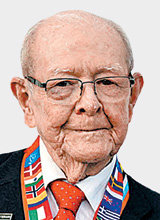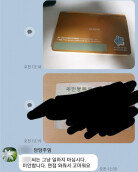A veteran’s Korean War battleground pictures become historic
A veteran’s Korean War battleground pictures become historic
Posted June. 24, 2020 07:40,
Updated June. 24, 2020 07:40


The Pictures taken by Gilberto Dias Belasco, a Colombian veteran of the Korean War, with a Kodak camera he bought about 70 years ago for five dollars will be revealed for the first time to mark the 70th anniversary of the war.
Belasco had stayed in Korea for 14 months from April 1952 to August 1953 after volunteering for the United Nations-authorized multinational forces at the age of 19. He has kept about 400 film pictures he took during that time, 152 of which will be revealed at www.warmemo.or.kr for six months from June 26.
The Embassy of Colombia in South Korea hosted a video press conference with the South Korean media on Tuesday, to which Belasco showed up in his military uniform with the South Korean national flag in the background at his son’s home near Bogota.
“I bought this camera for five dollars in Tokyo before coming to South Korea. It still takes good pictures,” he said holding the Kodak camera in his hand. “I didn’t know the pictures I took as a hobby will become historic,” he said with a smile. Colombia is the only country in South American that participated in the Korean War.
Belasco came to South Korea on a ship from Cartagena in Colombia through the Panama strait, Hawaii in the U.S., and Tokyo and Yokohama in Japan. Upon arrival, he was fascinated with Korea’s nature, especially its mountains. “The mountainous landscape in Korea was very similar to Colombia’s,” said Belasco showing a picture of two comrades in a truck against the backdrop of snow-covered mountains, although he added that he couldn’t remember the accurate name of the place.
How did he find films and print pictures during the war? He said that he got films from the United Nations forces going back and forth between Korea and Japan and asked a comrade heading to Hawaii to print the pictures. That’s how his films were taken to San Francisco, California and his pictures after printing were sent back to Belasco. “I still have the envelope,” he added, holding the envelope with a clear stamp mark in the air.
“There were so many bodies on the ground that we literally had to walk over them. I did not find the body of my closest friend at the time,” he said, describing the night when a lot of soldiers were killed from bombing. He confessed the regret he still feels for having been unable to find the friend’s body.
Bo-Mi Im bom@donga.com







